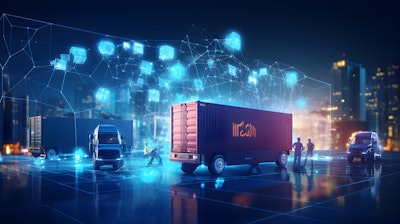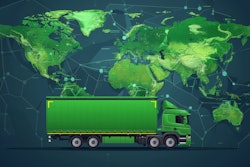
The logistics and supply chain industry, increasingly shaped by advances in technology, is turning to artificial intelligence (AI) to handle everything from shipment tracking to carrier procurement. These advancements bring efficiency, speed, and accuracy, helping third-party logistics (3PL) businesses streamline their operations. However, as capable as AI has become, human oversight remains critical to its successful deployment.
Human involvement in AI-driven processes is not a limitation but an immense addition to their value. It ensures not only the smooth operation of systems but also the quality and reliability of services, both of which are key to building and maintaining customer relationships. While AI is transforming the 3PL landscape, supply chain professionals and technology decision-makers must prioritize the role of humans in overseeing, guiding, and enhancing these technological processes.
Human empathy and customer-centric relationships
At its core, logistics is a customer-centric business. Shippers and clients entrust supply chain providers not merely with shipments, but often with their reputations and customer promises. AI, as advanced as it is, isn’t capable of providing the human empathy required in customer interactions or offer the kind of reassurance that strengthens relationships. Trust is central to the customer-shipper relationship, as well as the relationship between shipper and carrier.
For example, when a shipment is delayed or a critical disruption occurs, a customer doesn’t want to deal with canned responses from AI. They need a human who can understand their frustration, explain what went wrong, and provide actionable solutions. Logistics clients often need reassurance that their provider is fully invested in solving their problems. This kind of relationship-building, which fosters trust and loyalty, simply cannot be automated.
In short, tech can’t provide therapy to a client impacted by service levels. A great account manager supported by great tech can.
The role of humans in AI oversight
AI systems require meticulous oversight. While they can process vast amounts of data, there is always the chance of mistakes, biases, or gaps in the outputs. Take shipment routing, for instance. AI can suggest optimized paths, but if new disruptions like weather events or road closures arise, human input is necessary to reevaluate and adjust the plan instantly.
AI excels in repetitive, data-driven tasks but lacks the contextual understanding and problem-solving capabilities that humans bring to the table. A hybrid model, where AI takes care of routine tasks and humans step in for complex or nuanced issues, ensures both efficiency and accuracy.
Having a "human-in-the-loop" approach to AI is a clear acknowledgment of this need. Leading 3PLs, for example, automate tasks like rating shipments or entering data into a transportation management system (TMS), but humans validate and finalize the process. This reduces errors and enables team members to focus on providing better service.
Navigating last-minute disruptions
Logistics is inherently unpredictable. From 11th-hour disruptions to system outages, things can and will go wrong. While AI can identify emerging issues and reroute shipments using predictive analytics, it cannot proactively respond to complex disruptions without human oversight.
Imagine a situation where a critical shipment is held up at a border due to unexpected customs issues. AI systems may flag the problem, but resolving it often requires a seasoned professional with the knowledge, network, and communication skills to handle customs agents, rebook carriers, or coordinate alternative arrangements in real time. Humans act as the safety net when technology fails or cannot provide a nuanced response.
Elevating efficiency while ensuring accountability
The idea that AI can and will replace humans is a pervasive one, but the human-in-the-loop model of AI usage is complementary rather than competitive. By automating low-value, repetitive tasks, AI allows human employees to spend time on more impactful activities. Ergo, this doesn't mean replacing people but augmenting their capabilities. For instance, using AI, tasks like updating clients on shipment location or obtaining proof of delivery can be automated.
In this system, humans still remain accountable for the final service delivery. They serve as the “quality assurance” layer, ensuring that every decision made by AI aligns with business and client goals. This cooperative approach between humans and AI achieves what neither could accomplish alone. The "human-in-the-loop" methodology also ensures continuous learning for AI systems, improving their accuracy through regular supervision and feedback.
Combining innovation with human intelligence
AI adoption in logistics must maintain a balance between technology and the human element. Organizations that ignore this balance risk losing their competitive edge—inevitably, either their efficiency will fall behind due to lack of automation, or their relationships will suffer without the human factor. Clients value personalization, empathy, and adaptability in their logistics provider. Tools like AI enhance these traits rather than replace them.
For 3PLs, the right balance of AI and humans means positioning themselves as both a logistics provider and a freight tech innovator. AI tools like predictive analytics, automated data entry, and real-time monitoring act as "lifeguards" across critical workflows. But humans are the ones steering the ship, ensuring the optimal use of technology to address customer needs while safeguarding operational excellence.
Building long-lasting client relationships
Logistics is about partnerships. Businesses that rely solely on automation risk alienating their clients by diluting the very human relationships on which trust in logistics is built.
For clients, having knowledgeable account managers who are backed by robust technology ensures that they always receive personalized service. This alignment between technology and people creates a foundation for successful, long-term partnerships.
Shaping the future of AI in logistics
AI is an undeniable advantage in logistics and supply chain management. It streamlines operations, cutting both time and costs, and allows companies to offer services at greater scale and efficiency. Still, as we plunge forward into the future of automation, it’s critical not to lose sight of the one element that has always defined exceptional logistics providers: human insight and empathy.
Organizations that prioritize a human-in-the-loop approach will find themselves better equipped to adapt to challenges, foster client relationships, and remain resilient. In a vast marketplace that demands that companies set themselves apart, each of these factors can make or break a company’s ability to individuate and excel.
By balancing technological advancements with human capability, logistics providers can ensure they meet client expectations, manage disruptions, and deliver superior service. Used properly, AI doesn't replace humans; it empowers them to be better. And in an industry dependent on trust and reliability, that is what sets a logistics provider apart.















![Pros To Know 2026 [color]](https://img.sdcexec.com/mindful/acbm/workspaces/default/uploads/2025/08/prostoknow-2026-color.mduFvhpgMk.png?ar=16%3A9&auto=format%2Ccompress&bg=fff&fill-color=fff&fit=fill&h=135&q=70&w=240)


